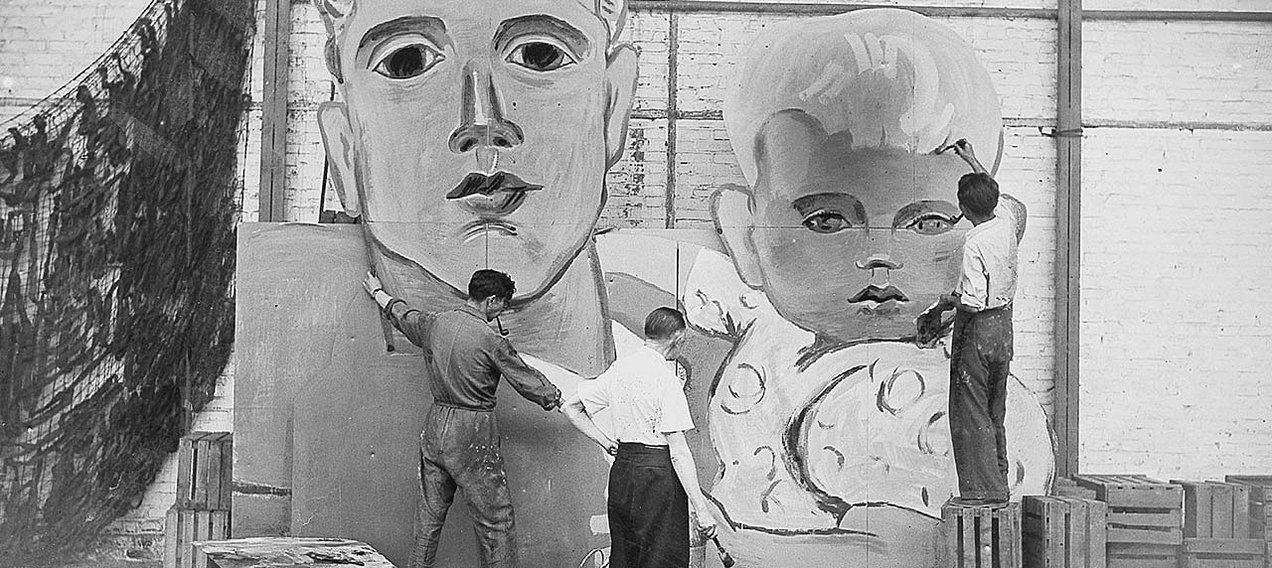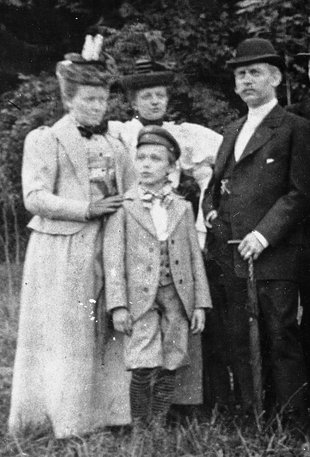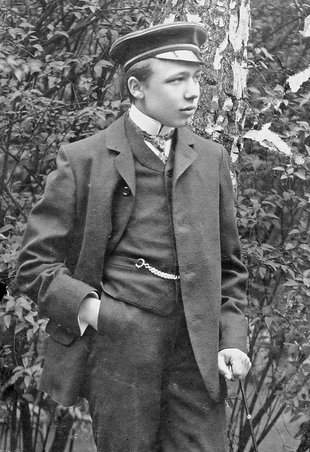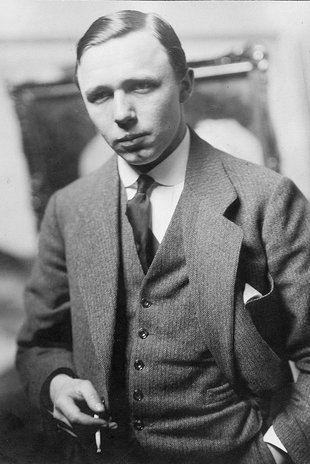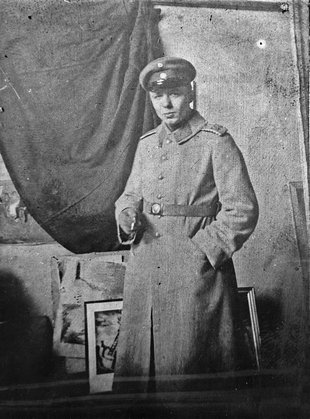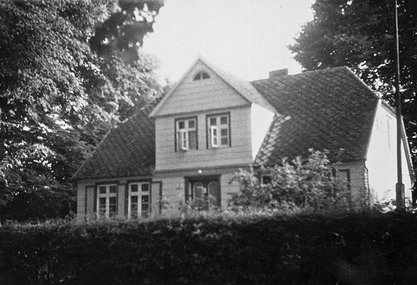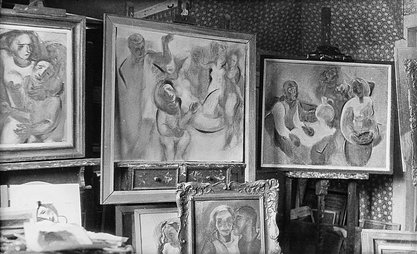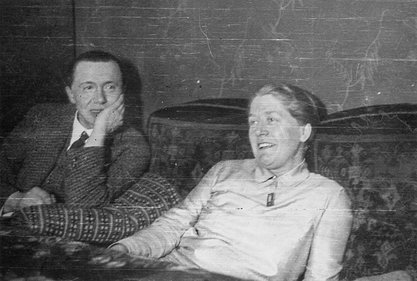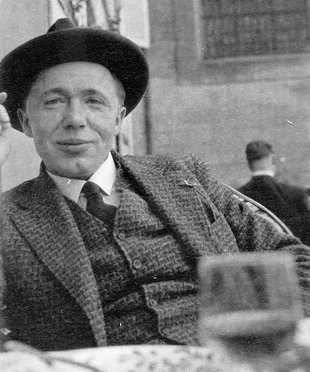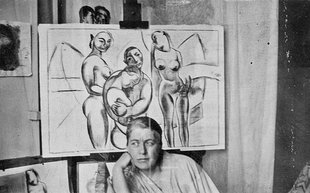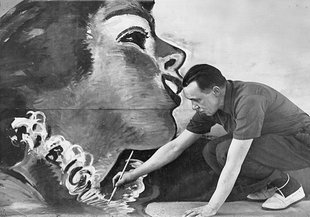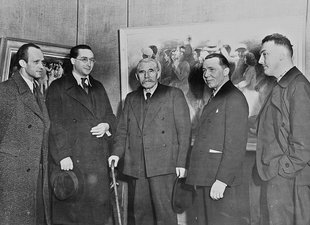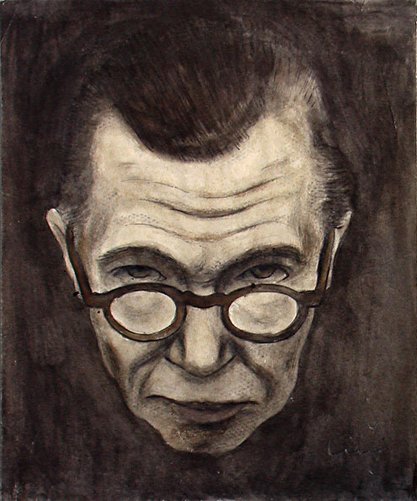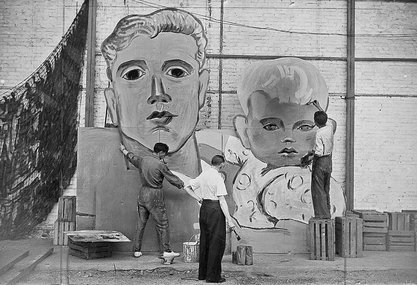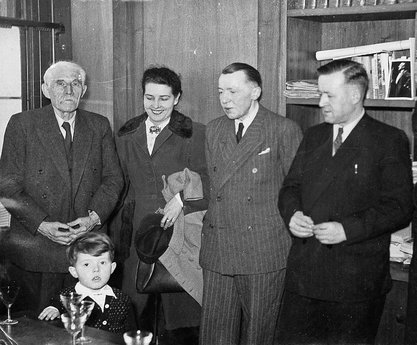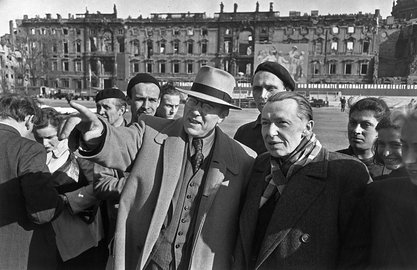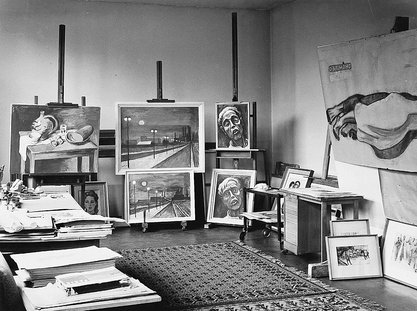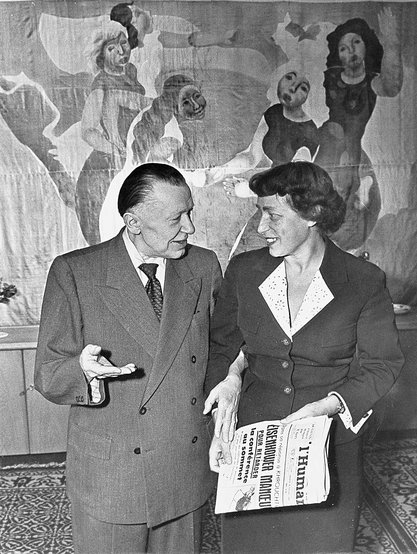"Those seven decades, which Max Lingner lived through, also fell into an epoch of enormous spiritual and social upheavals; a time, which not only made it difficult for the artists to recognize the true progress in art and society, but which also demanded of their decision the consequence to dare even life in the struggle for the realization of the ideals won." (Gertrud Heider, Max Lingner. Monograph, Leipzig 1979.)
Childhood and study years in Leipzig and Dresden
1888-1912
On November 17, 1888, Carl Franz Max Lingner was born in Leipzig as the fifth child of the wood engraver Maximilian Lingner (1851–1928) and his second wife Pauline (1862–1940). On the advice of his father and artist friend Max Klinger, he was able to attend evening classes at the Leipzig Academy of Graphic Arts and Book Trade at the age of 16.
After graduating from high school, Lingner received a scholarship from the city of Leipzig to study painting at the Dresden Art Academy under Professor Carl Bantzer. Lingner esteemed his teacher as one of the best late impressionist realists of his time. He was also inspired by the city, visiting exhibitions of modern art and taking inspiration from works by Ferdinand Hodler and Hans von Marées.
Troubled years in Germany
1913–1928
In December 1913, Lingner married Lisa Arsand (1882–1951), the daughter of a Weißenfels shoe manufacturer. Together they traveled to Paris, London, Bruges, Brussels and Amsterdam. In March 1914, Lingner finished his studies at the Dresden Art Academy and only a few months later was called up for military service. Little is known about his time as a soldier in World War I. He was stationed in the infantry and with the naval air forces and, according to his own statement, took part in the sailor uprising in Kiel in November 1918. After demobilization, Max and Lisa Lingner settled at the Baltic Sea in early 1919, where Lisa had bought a house in Born on the Darß. Lingner tried to combine his artistic work with the life of a farmer, but did not succeed. The couple therefore decided, in the spring of 1922, to give up the farm and move to Weißenfels. Here Lingner accepted commissions, painted portraits and genre paintings. Due to their proximity to the Leunawerke, he also dealt with the social problems of the time. In 1927 he created the lithograph series Arbeiterliebe (Workers' Love), which Lingner sent to Käthe Kollwitz, receiving her praise and encouragement to move to Paris.
An intense decade in Paris
1929–1939
At the beginning of 1929, Lisa and Max Lingner set off for Paris, where they first lived in the artists' quarter of Montparnasse and then rented an apartment with a studio on the Bois de Boulogne. Through the communist writer Henri Barbusse, Lingner came into contact with the left-wing intellectual circle around the weekly newspaper MONDE. Barbusse published the lithograph Arbeiterliebe on the cover of MONDE on September 27, 1930. In the following years, Lingner designed not only more than 30 title pages, but also interior pages and was responsible for the weekly newspaper's makeover. In 1936, he became an employee of the daily newspaper l'Humanité and was thus "sentenced" to daily drawing. His signature ling developed into a trademark.
Lingner is also able to hold his own as a painter in Paris: in 1933 and 1939 he was given solo exhibitions at the Galerie Billiet run by Pierre Vorms. He also participated in large group exhibitions and the Jeu de Paume Museum and the French state each bought a painting. Lingner became a member of the French Communist Party and a founding member of the Deutscher Künstlerbund in Paris.
An odyssey through France
1940–1948
The day before the outbreak of World War II, Lingner was arrested. His wife Lisa had fallen seriously ill and was placed in a psychiatric hospital in Villejuif since 1935. Lingner was interned in several camps in France from the Roland Garros stadium in Paris to many other locations: first in Villerbon and Cépoy, then in the south in Les Milles and St. Nicolas, and from October 1940 in Gurs, near the Spanish border. There he worked as a drawing teacher for the "Schweizer Hilfe" (Swiss Aid), and was able to draw a lot himself. After a year he found accommodation in Chansaye near Lyon, 800 km away, where the Catholic priest Abbé Glasberg has set up a reception center. Lingner made contact with the Résistance movement, received a false French identity card, and in December 1943 moved to another Glasberg home in Cazaubon in the Pyrenees. He forwarded messages from the Résistance and, thanks to his good language skills, repeatedly escaped from dangerous situations. In October 1944, Lingner was able to return to Paris. Although he was extremely weakened and ill, he resumed his work as a press artist for l'Humanité and also his exhibition activities. He again painted large-scale decorations for the newspaper's press festivals and sold a painting to the city of Paris.
Return and ambivalent late work
1949–1959
Lingner decided to return to Germany and moved to East Berlin in March 1949. He donated forty paintings and drawings from the years 1929 to 1949 to "The German People", which are shown in a traveling exhibition and today belong to the Staatliche Museen zu Berlin (state museums of Berlin). Lingner became a professor of painting at the Berlin-Weißensee Art Academy, a member of the Academy of Arts, and moved into a house with a studio in Niederschönhausen with his second wife, the lawyer Dr. Erika Hoffmeier (1914–1997).
His largest commission was a mural for the House of Ministries. During the execution he had to painfully experience how the formalism campaign hit him as an emigrant from the West, because Minister President Otto Grotewohl demanded a revision of the numerous drafts in favor of the desired political message. Lingner still began a cycle of paintings on the history of the German people, published his autobiography and was honored in 1958 with the exhibition "Max Lingner 70 years old" at the Academy of Arts in Berlin.
He died on March 14, 1959, and was buried at the Niederschönhausen cemetery in accordance with his wishes.

